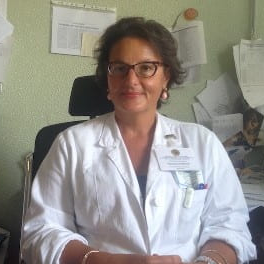Malaria in Non-Endemic Areas: Diagnosis, Therapy and Epidemiology
A special issue of Microorganisms (ISSN 2076-2607). This special issue belongs to the section "Parasitology".
Deadline for manuscript submissions: closed (31 March 2021) | Viewed by 16093
Special Issue Editor
Interests: virology; parasitology; bacteria; molecular diagnosisl MALDI-ToF mass spectrometry
Special Issues, Collections and Topics in MDPI journals
Special Issue Information
Dear Colleagues,
At a time when attention is directed towards a serious health emergency, malaria continues to claim victims. In non-endemic areas, malaria is generally an imported disease that must be taken into account in differential diagnoses in travellers presenting with signs and symptoms after returning from endemic areas, especially considering the increasing number of migrants that have in recent years been moving, in addition to tourists or business travellers. In areas where a competent vector population exists, the potential for reintroduction of the disease remains. The knowledge of plasmodia distribution, the attention of physicians in non-endemic areas in suspecting malaria in the presence of signs and symptoms, and the application of appropriate diagnostic assays, as well as the administration of a prompt therapy are essential. This Special Issue aims to draw the attention of malaria experts to publish articles that increase knowledge of its epidemiology in non-endemic areas and make it as up to date as possible, as well as articles that focus on advanced diagnostic methods and on the latest news on therapy in order to reduce the impact of imported malaria and the risk of reintroduction of autochthonous malaria in malaria-free regions.
Prof. Dr. Adriana Calderaro
Guest Editor
Manuscript Submission Information
Manuscripts should be submitted online at www.mdpi.com by registering and logging in to this website. Once you are registered, click here to go to the submission form. Manuscripts can be submitted until the deadline. All submissions that pass pre-check are peer-reviewed. Accepted papers will be published continuously in the journal (as soon as accepted) and will be listed together on the special issue website. Research articles, review articles as well as short communications are invited. For planned papers, a title and short abstract (about 100 words) can be sent to the Editorial Office for announcement on this website.
Submitted manuscripts should not have been published previously, nor be under consideration for publication elsewhere (except conference proceedings papers). All manuscripts are thoroughly refereed through a single-blind peer-review process. A guide for authors and other relevant information for submission of manuscripts is available on the Instructions for Authors page. Microorganisms is an international peer-reviewed open access monthly journal published by MDPI.
Please visit the Instructions for Authors page before submitting a manuscript. The Article Processing Charge (APC) for publication in this open access journal is 2700 CHF (Swiss Francs). Submitted papers should be well formatted and use good English. Authors may use MDPI's English editing service prior to publication or during author revisions.
Keywords
- malaria
- malaria burden
- plasmodia
- non-endemic areas
- imported malaria
- diagnosis
- therapy
- epidemiology






